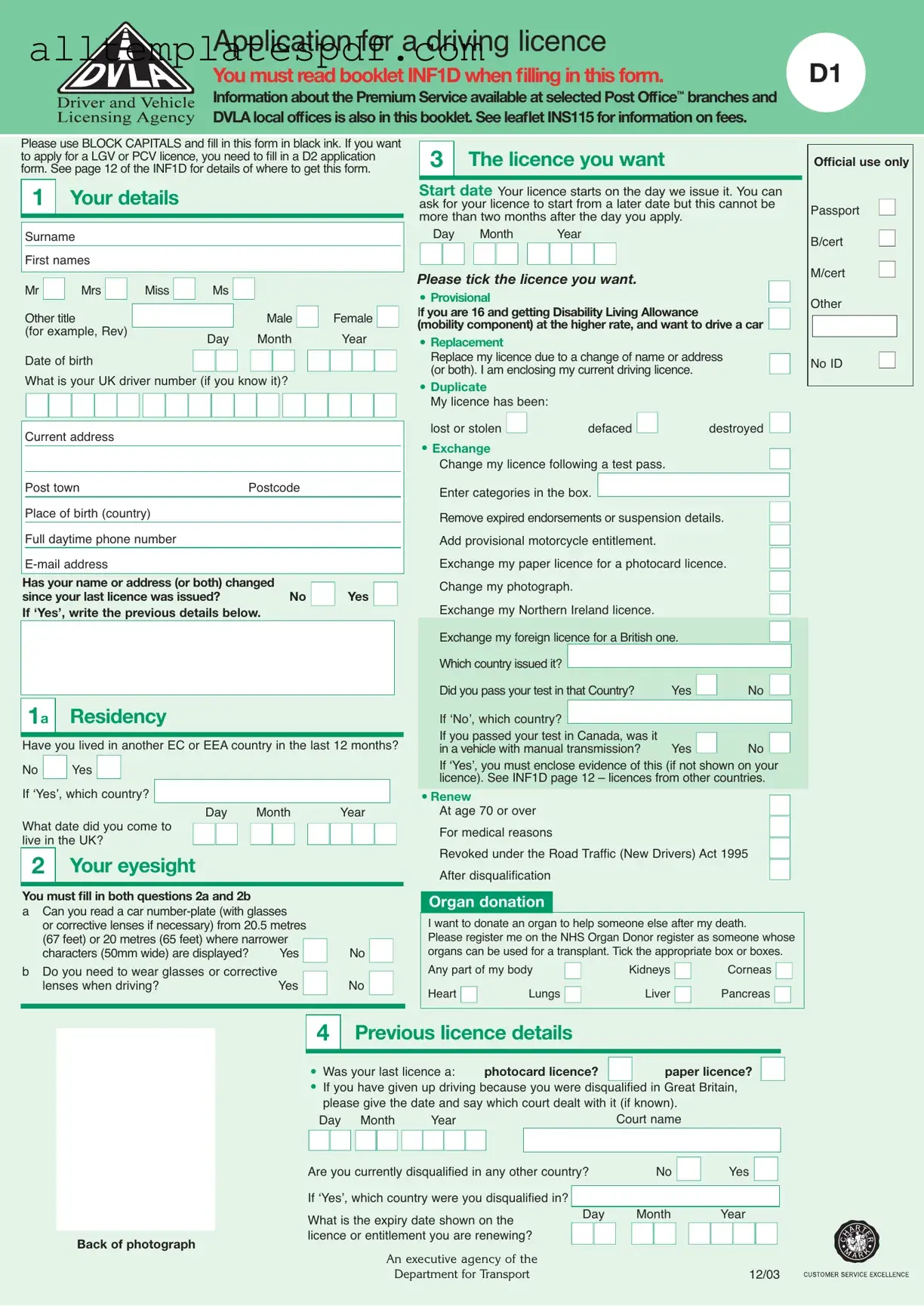Filling out the D1 DVLA form can be a straightforward process, but many applicants make common mistakes that can delay their application. One significant error is not using block capitals and black ink as instructed. This requirement is essential for clarity and legibility. If the form is not filled out correctly, it may be returned for correction, prolonging the application process.
Another mistake involves failing to provide a current address or omitting previous address details if there has been a change. This information is crucial for the DVLA to verify identity and residency. If this section is incomplete, it could lead to complications in processing the application.
Many applicants overlook the eyesight section of the form. It is vital to answer both questions regarding the ability to read a car number plate and the need for corrective lenses. Incomplete responses here can result in the application being sent back, as the DVLA requires this information to assess fitness to drive.
Additionally, some individuals do not check the appropriate boxes for the type of licence they are applying for. Whether it is a provisional licence, a replacement, or an exchange, selecting the correct option is necessary to ensure the application is processed accurately. Misunderstanding this section can lead to unnecessary delays.
Another frequent oversight is not providing the required identity documents. Applicants must ensure that they include the correct documents, such as a passport or birth certificate, as photocopies are not accepted. Failing to include these documents can result in the application being returned for missing information.
Furthermore, applicants sometimes neglect to sign their photograph or fail to have it signed by a reliable person as specified. The person signing must have known the applicant for at least two years and cannot be a relative or a member of the Post Office staff. This requirement is often overlooked, leading to potential issues with the application.
Lastly, many people do not read the accompanying booklet INF1D thoroughly. This booklet contains vital information about the application process, including fees and additional requirements. Ignoring this resource can lead to mistakes that could have been easily avoided.
